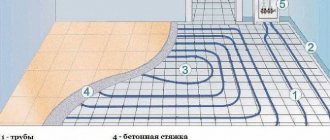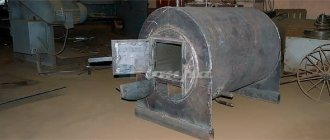Fuel from water! - the cheapest…
Inventors of all stripes, from home craftsmen to academic consolidations, are trying to create something new. The priority is energy conservation and savings, new boilers and new, cheapest types of fuel.
The idea of creating fuel for the home from water, or with an admixture of water to make it cheaper, is not new. She still occupies a leading position among home inventors.
Is it possible to literally heat your house with water?, what were the results?, - more...
What's the idea
It is known that water consists of hydrogen and oxygen, H2O. Hydrogen itself (H2) burns, releasing energy 3 times more than ordinary natural gas. Oxygen (O2) is an oxidizing agent during combustion, a very active substance, it reacts with the same hydrogen, carbon (C) forming water and carbon dioxide CO2 or carbon dioxide CO gases with a large release of heat.
If you somehow split water into its components, you can get the most needed fuel cells.
The question arises: what will happen, for example, if water vapor is supplied to the plasma, mixed with burning wood or coal...
Amazing experiments more...
Experiments with eternal logs
An everlasting log is a small metal tank with small holes to allow water vapor to escape. This container is filled with water, the neck is screwed on, and placed on the bottom of the oven. The container heats up to a high temperature, water vapor comes out of it, going directly onto the burning coals.
As a result, according to the experimenters, black soot disappears in the smoke. Those. supposedly the carbon particles normally carried away into the pipe now all react with oxygen. The flame becomes saturated with long tongues, etc.
But it’s true that measurements of the actual heat received were not carried out, it is impossible to measure it at home, but all the signs of high energy output are present...
Adding water to regular fuel
By analogy, another experiment from people who call themselves “home inventors.”
What happens if you add water to diesel fuel? It turns out that the mixture is burning! There is also less soot, some roughness of combustion occurs, and a crackling sound is heard.
Add a little diesel fuel to a bottle of water, mix it well, let it sit for about five minutes, then dip a piece of paper into the top of the mixture, set it on fire, and it burns.
Another experiment. We mix diesel fuel with water in some proportions, pour it into the diesel engine of the tractor, start the unit, the tractor works. those. rumbles, standing still...
And you can come up with many more similar experiments with adding water to any fuel (flammable substance) - gasoline, gas, oil, diesel fuel. And if done carefully, it is likely to get burned...
Similar videos from “inventors” can be easily found on the Internet. And we can conclude that water can be used to heat a house, for example...
What can be questioned
In such experiments, the main thing is not agreed upon - the amount of heat received, energy released and work done.
This applies to both eternal logs and burning diesel fuel with water. But it is not known whether the “tractor on water” will be able to move, let alone work for months and years.
After all, everyone knows that water is used to extinguish, not to light... Because water has a high heat capacity, it cools the burning object, enveloping it, preventing oxygen from the air from accessing the carbon (usually) in the fuel. Therefore, putting out a fire with water from a bottle is no problem.
Why can't you drown with water?
The following is known. To decompose water into oxygen and hydrogen, you need to spend more energy than will be released during their reverse reaction. The ratio is something like this:
- for water splitting - 100% energy;
- When the components are burned, only 75% of the energy will be released.
That’s why nothing rides on water, doesn’t fly, doesn’t spin...
A car that runs on clean water has long been created. The splitting of water is achieved through electrolysis - H2 is released at one electrode, and O2 at the other. They are then burned in an internal combustion engine. But such a car turned out to be the least economical of all existing ones...
Pure deception
All experiments with adding water to ordinary fuel (to “burn water”) are pure deception. No energy is added. On the contrary, the benefit decreases, since most of the energy is spent on evaporation of water.
When heated by normal combustion, water does not enter into any reactions; it simply evaporates. And for this process it is necessary to select the lion's share of the heat, which could be used usefully.
For example, when burning dry wood with a humidity of no more than 20%, about 3.9 kW will be released per kilogram of fuel. When burning wet wood, 50% humidity - only up to 2.2 kW per kilogram.
What's Really Happening
- When a piece of paper dipped in a solar-water mixture burns, a cracking sound is heard - the evaporation of water. Before this, a drop of diesel fuel is mixed in a bottle of water, shaken, but then it is allowed to settle, and the diesel fuel again collects at the top of the bottle. Diesel fuel, oil, gasoline do not mix with water, do not create homogeneous mixtures, they are lighter and gradually accumulate on the surface.
- A tractor running on a water-solar mixture will not do anything - the diesel energy will not be enough for work. All you have to do is chatter while standing still. And the engine will quickly fail...
- The eternal log greatly cools the oven, taking energy to evaporate water. It's like heating with wet wood.
- The following schematic drawing of a burner with water supply to the natural gas combustion zone is a common deception.
We always drown with water
Water vapor is always present in the air. In residential premises, the average air humidity is 50%, in rainy weather outside the humidity is 90%. So water is already present during the combustion of any fuel; it is found in large quantities directly on the hot surface of the substance that reacts with oxygen from the air, whether we like it or not. It turns out that there is no need to carry out such experiments, water is always present in the flame anyway...
“Webasto from the USSR”: how the autonomous stove from ZAZ works and how it can be useful today
We don’t often publish articles on some kind of homemade products - nevertheless, there are more highly specialized publications for them. But sometimes this happens in particularly interesting cases!
The very design of an indirectly heated gasoline/diesel stove (where fuel burns inside a heat exchanger boiler, which is blown outside by a fan to produce a flow of hot air) is not the invention of leading companies in this field such as Webasto or Eberspacher; it existed long before their appearance. The Germans simply brought the well-known circuit to perfection in detail and added various service electronics.
In the USSR, for many years, their own “Eberspächer” was in use in the form of a heating installation for our most famous car with an air-cooled engine, the “Zaporozhets”. Both the “hunchbacked” ZAZ-965 and the “eared” ZAZ-968. There was no jacket of hot antifreeze around the Zapora engine, and there was nowhere to take the associated heat from. Therefore, the factory workers had to design the stove as a completely independent device, independent of the engine. The solution was quite typical for its age: the same autonomous gasoline stoves were in other cars with air-driven engines - both in bourgeois Porsches and in the socialist camp Tatras.
Interestingly, in the big-eared ZAZ-968 this stove stood in front (that is, in the front trunk) and only heated the interior. But in the older ZAZ-965 it was located at the back, in the engine compartment next to the engine, and had a separate pipe from which hot air was directed to the upper engine casing - in cold weather the stove served as a pre-heater!
The same stove produced by the Shadrinsk Automotive Component Plant SHAAZ was used on much less common LuAZ vehicles, as well as on various construction and specialized equipment, which often did not have gasoline engines in principle - for example, on tower cranes or in various kinds of control cabins.
Well, as often happens, there was a massive curiosity. In its native place, the SHAAZ stove caused streams of hatred from the slaughterers, but having been removed from the “eared” one, it had popularity and demand that has not declined to this day, even in the 21st century. Why did this happen?
“ZAZopechka” had a number of unpleasant features. Firstly
, it consumed a lot of fuel, almost like the main engine of a car.
Secondly
, the ignition of gasoline was carried out in it with a glow plug, which consumed more than one and a half dozen amperes of current and, during short trips, quickly discharged the battery even with a fully functional generator.
Thirdly
, the stove was very noisy - the roar of the air and the whistling of the motor bearings could drown out even the main motor.
And, finally
, a feature of popular thinking for some reason excluded the stove from the list of components requiring maintenance, as a result of which for many it was constantly clogged with soot, did not heat well, started unstably and stank of gasoline into the cabin.
Which did not contribute to the love either for the stove in particular, or for “Constipation” in general. By the way, in passing, it’s worth explaining for the TikTok generation - this iconic machine has always been called “constipation” from jokes, with an emphasis on the “a”.
And not “constipation”, as for some reason many people think. As a result, it became popular among handy car owners to switch the locking stove to gas power and spark ignition. This allowed it to start almost instantly, work economically, not emit an unpleasant odor and consume 1 ampere of current for ignition instead of 16. After such a “renovation”, the SHAAZ stove worked successfully in the Zaporozhets themselves, where a five-liter cylinder of liquid propane was almost enough for the whole winter, and for heating garages, and in a variety of other equipment - connoisseurs of “Russian webast” heat vans, trucks, motorhomes and similar vehicles and trailers with it.
Of course, this option is only suitable for those who are ready for some plumbing and electrical work. However, today even amateurs are actively taking up the task of remaking Zaporozhye stoves - there are a lot of instructions on the Internet, and the cost of a stove from 500 to 1,500 rubles pays for the effort, since even nameless Chinese clones of German autonomous cars require 10-12 thousand rubles. In its standard form, the stove includes a boiler, a “carburetor,” a discharge turbine, and casings for connecting to the machine’s air duct system:
In fact, many people start with the casings when reworking and simultaneously overhauling the stove - they are often simply thrown out entirely, because in their original form they are optimized for the Zaporozhets and are practically meaningless when using the heater outside of it.
The basis of the entire stove is a stainless steel boiler-heat exchanger. Gasoline is injected inside it, combustion air is blown in, and the exhaust is discharged outside - through a large pipe with a massive flange for bolts (in the photo it is on top). The boiler is stuffed into a flimsy casing - a pipe made of roofing tin, painted with heat-resistant silver.
The stove is powered by a “carburetor”, very similar to a real carburetor - with a float chamber, a needle, a jet and even a built-in solenoid valve that shuts off the gas supply when the stove is turned off. Why in quotes? Yes, because, in fact, the carburetor is primarily involved in preparing the fuel-air mixture, and the “carburetor” of the SHAAZ stove supplied only fuel to it and did not mix it with air. Therefore, it is more correct to call it a gasoline dispenser rather than a carburetor.
Strictly speaking, when converting the stove to gas, this “carburetor” is absolutely not needed - it can be unscrewed and scrapped entirely. And the power dispenser for the stove in the converted gas version is a jet (any type of bushing) with a hole of 0.8-1.0 mm - not the standard “carburetor” jet, but a homemade one - made from scratch, suitable or drilled, taken from some then the carburetor from the engine. Where this jet will be located in the power supply path is not important. Either directly in the fitting coming out of the stove, or at any point in the rubber gas hose. You can even tightly solder the power supply tube with a 100-watt soldering iron, and then drill a hole in the solder plug with a thin 0.8-1.0 mm drill.
The turbine-supercharger in SHAAZ is twin: two different impellers are installed on the motor axis.
The first - metal (on the left) - works in the hot zone. When assembling the stove, it is inserted into the cavity of the combustion chamber and forces air into it to burn fuel, which is sucked in through the side pipe (pictured above). This air then escapes as exhaust gases.
The second impeller (on the right) is plastic, larger, and it blows air along the outer surface of the hot boiler and removes heat - this air goes into the car interior. The flows from the two impellers are separated and do not mix.
The peculiarity of the SHAAZ stove motor is its low efficiency due to a small impeller of a coaxial design (as at one time the coaxial fan of the VAZ 2101-07 stove was inferior to the centrifugal fan VAZ 2108-99), noise and tendency to die due to souring of bronze-graphite bushings, in which the rotor rotated. Moreover, despite the low efficiency of purging, it roared and howled, even when fresh and in good working order, quite like an adult...
A curious element of the stove is the thermal switch: a powerful “microphone” button with a “three” contact. The button was fixed in a bracket with a long metal tube protruding from it, capped at the end. When the thermal switch is mounted using a union nut at its workplace, this tube is located in the combustion chamber, in the flame itself. Inside the tube is a thin quartz rod, which, when the tube lengthened due to heating, moved a couple of millimeters, commutating the button.
The glow plug and the supercharger motor are normally connected through this thermal switch in the SHAAZ. After stable combustion was established inside the boiler, the thermal switch automatically de-energized the glow plug, and then the combustion was self-sustaining. And after turning off the stove, the thermal switch supplied power to the fan for some time before it cooled down - to burn off the remaining fuel, purging and cooling the boiler.
When converting a stove to gas or spark ignition, the thermal switch is sometimes retained, sometimes not used. Unlike a glow plug, you do not need to turn off a spark plug using it - although the gas can also burn perfectly well on its own, it is more reliable when the spark is constantly on the electrodes of the spark plug. If for some reason the torch goes out, it will instantly flare up again. And the current consumption of spark ignition is negligible. If the standard thermal switch is left, then as a timer to ensure purging of the boiler after shutdown and to control the gas electric valve (more about it below).
In any case, if the standard thermal switch is not used, it must either stand in its rightful place unconnected, or some kind of plug must be selected instead. Because its absence creates a hole in the combustion chamber.
The original glow plug for igniting gasoline is called SZ65A, and, oddly enough, it is still in production and can be purchased. Of course, you won’t find it on every corner, but in large auto parts stores you can find it for 350-400 rubles.
The spark plug is installed into the combustion chamber through a copper washer and pressed with a flange nut. It is not able to ignite propane, and when the stove is switched to gas power, the standard spark plug is completely scrapped - you only need to save the fastening union nut and (sometimes) the removable glow plug cover with slots that protects the spiral.
Actually, you shouldn’t look for a ready-made spark plug for spark ignition, which you could simply screw on “bolt-on” instead of a glow plug, in a store - candles with such threads do not exist in nature. They are made handicraft from ordinary car spark plugs - without any problems, an already working, not new one will do.
If a modern compact and thin spark plug with a 16mm wrench is used, then its metal hexagonal part is slightly ground so that it fits into the hole in the seat, and the length of the threaded part of the standard union nut is enough to secure the spark plug.
If you use a candle with the classic 21mm turnkey dimensions, then it may not be possible to grind its metal part - the diameter and height will not yet approach the necessary ones, but a cutter, file or grinder will already reach the thick ceramic part. In this case, you can completely cut off the metal elements from the spark plug, shorten part of the ceramic insulator, slightly shorten the central electrode, and bend its tip to the side. A removable casing from the original glow plug is put on such a “plug” (which serves both for centering and acts as a side electrode), and this “Frankenstein” is placed in its original place through the original copper gasket. A completely workable option.
Do-it-yourselfers use different options as a source of high voltage spark. The simplest one is easy to find in the mass of reports on the conversion of the SHAAZ stove - a primitive pulse generator from a regular 5-pin automotive relay, which switches a regular automotive ignition coil. The option is quite workable, but unreliable and noisy. There are no questions about the reliability of the coil, but the relay does not work for too long in continuous “crackling” mode.
Also common is the option of a spark generator from a conventional switch from carburetor front-wheel drive VAZs in tandem with the AZ-1 emergency ignition unit. The option is quite reliable, although cumbersome. And whoever is comfortable with a soldering iron can make a simple homemade electronic generator that switches a coil:
Actually, after making the spark ignition, all that remains is to connect the gas to the stove. From a regular refillable propane cylinder with a reducer of any capacity - both a mobile 5-liter and a stationary 50-liter are suitable. Some do-it-yourselfers supply gas to the stove directly from the cylinder, turning off the valve on it, while others supply gas through a normally closed electric valve from automobile gas equipment, which is included in the path after the valve on the cylinder. There is no difference in the final result - just an electric valve in series with a manual valve does not make using the stove any safer if it is turned on through the above-mentioned thermal switch. In this case, the gas will be shut off when the thermal switch cools down, when suddenly the stove goes out for some reason.
However, a gas valve is not critical. The main thing is to strictly follow the sequence of starting and turning off the stove. First, the air blower motor and spark generator are turned on (with one common button), and then gas is supplied by turning the valve and opening the solenoid valve, or simply turning the valve if the valve is not used. The sequence is exactly this - not the other way around, which is fraught with an explosion of a boiler overfilled with gas (with the release of soot in a light version, or even destruction of the integrity of the boiler!).
Switching off occurs in the reverse order. First, the gas is shut off, and then (after about five minutes), the blower fan is turned off. This delay is needed to expel the remaining unburned gas and cool the hot boiler.
To eliminate the human factor in the algorithm for starting and turning off the stove, home-made people often make a simple relay circuit that does not allow the sequence of actions to be confused and provides an automatic delay for purging - either using a standard thermal switch or using various cheap timers from Aliexpress.
Well, we can sum it up with the traditional recommendations of accuracy and caution! Gas is not a terrible thing, as many people mistakenly believe, but only with careful approach and attentiveness!
Pros and cons of waste oil furnaces
So, like any oven, POM has both its advantages and disadvantages. And we will tell you about them now.
Pros of POM
- The first and undoubted advantage is free or very cheap fuel (depending on your luck). Sometimes in car service centers or car parks, including agricultural vehicle parks, people are simply welcome to take away their working hours. After all, recycling costs money.
- Used engine oil burns well, generates a lot of heat, and at the same time, harmful emissions into the atmosphere are insignificant.
- Exhaust stoves can be used for cooking, that is, as a stove, or as a heating boiler.
- The stoves are quite small in size, which is useful when installed in a small room. The efficiency of waste oil furnaces is very high - 90% and above, and this is truly a record figure.
Disadvantages of waste oil furnaces
In fact, POM has one drawback: it stains the surface and has a not very pleasant smell. However, this is not a significant drawback; the remaining minor drawbacks are the same as those characteristic of other stoves using different fuels.
Waste oil furnace efficiency
Yes, stoves using synthetic fuel - gasoline, diesel fuel, machine oil and kerosene are the most energy-intensive and efficient, but their use is unprofitable due to cost - burning gasoline or diesel fuel in a firebox to produce heat is wasteful and not everyone can afford it. A gas bath allows you to save on fuel, but this is a completely different story, besides, not everyone has mains gas, and heating with bottled gas is expensive.
However, used engine oil retains its flammable properties after being used for its intended purpose. As a rule, after changing the oil in cars, car services also pay for the disposal of used oil, since in their area it can no longer be used anywhere.
This is where you can take advantage of the situation and acquire a waste oil furnace (WOM), and try to negotiate with car services about free waste disposal.
Waste oil furnace design
The design of the POM is not quite typical for other types of furnaces, and consists of 4 main elements:
- Fuel tank (capacity). This is a container consisting of two parts, the first is the base, a sealed bowl, the second is a lid with a side, up to 30% of the width of the side of the bowl. In the lid there is a large hole in the center for the injector, and a small one on the side for control, filling and for supplying primary air.
- Combustion chamber or injector. This is a steel pipe with perforated walls that is installed in the fuel tank.
- Heat exchanger. Located above the injector, it is a washer-like container. The heated gas concentrates there. The top surface of the heat exchanger is essentially a hob on which you can place a kettle or frying pan. If necessary, the heat exchanger is upgraded, for example, for heating a house, garage or workshop.
- Chimney. The chimney pipe creates the necessary draft due to the temperature difference. The pipe, for effective traction, must have a length of at least 3.5 meters.
You can buy stoves that run on waste oil - and this will be the right decision, or you can do it yourself. Review of factory POMs - here, how to make a furnace using waste oil with your own hands - here.
In addition, you can convert an ordinary wood-burning stove into a POM; for this you need a kind of adapter - a fuel tank and an injector.











